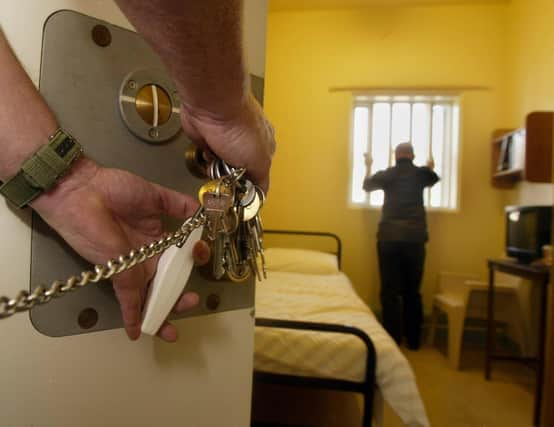Karyn McCluskey: We will reap rewards of keeping young out of prison


One of the all-time (not) greats included the ‘Little Albert’ experiment in the 1920s where they conditioned a nine-month-old child to develop irrational fears – spoiler alert it involved rats and large gongs.
Or for the animal lovers out there, there’s the Harlow experiment from the 1950s where they took baby rhesus monkeys and substituted their mothers with either a wire surrogate who had an attached food bottle or one made of soft terrycloth. The baby monkeys spent more time cuddling the terrycloth surrogate who had no food. There are pictures on the internet – they are sad, don’t look.
Advertisement
Hide AdAdvertisement
Hide AdI wonder if an experiment has been done where the population has been bombarded with terrible news, delivered by different methods for maximum effect, where daylight hours and sunshine are limited and basic living is really challenging. Wouldn’t pass an ethics panel.
So despite the cheery start, I wanted to highlight an interesting work experiment - based on great research in Scotland that has been done over a number of years. I compared the number of young people who have ended up in prison over the last decade and from 2011/12 to 2021/22 there have been vast reductions. The changes are dramatic. Having no young people in the prison estate is within touching distance. We will see the legacy of the drive to prevent young people being criminalised and will see them going on to lead productive lives. I cannot tell you how important this is, we will reap the rewards of this approach for decades to come.
Absence of evidence is not evidence of absence - the impact of prevention and early effective intervention activity needs to be measured over many years. This can be difficult for policy makers and politicians who need shorter term measures to show that things are moving in the right direction. The work in Scotland shows that we have achieved something really substantial in justice, delivered by lots of people in services from schools to the Children’s Reporter, from police to children and family social workers.
That’s not to say that we don’t occasionally come across young people who present complex problems and indeed risk – but we have adapted to manage them in community environments outside the prison system until they are of an age to be managed differently.
The fabulous Edinburgh transitions study following 4,300 young people over 21 years, carried out by the two super women Lesley McAra and Susan McVie from Edinburgh Uni looked at the factors which impacted on young people’s involvement in and desistance from crime. Also the impact of being involved with the justice system as a young person and how it affected their longer-term life chances, including health, employment, family and criminal convictions.
This seminal research gives us a blueprint for making even greater leaps in improving the lives of our citizens, together with the work of The Promise who are changing the lives of care experienced children.
I won’t be able to show you week by week results, but I can give you hope and some light – and we all need that. Happy New Year.
• Karyn McCluskey is chief executive of Community Justice Scotland
Comments
Want to join the conversation? Please or to comment on this article.